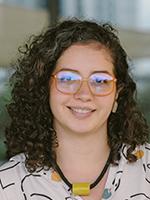

Rethinking Report Cards: Making Learning Visible Through Video Reports |
Listen and learn : Snapshot
Snapshots are a pairing of two 20 minute presentations followed by a 5 minute Q & A.
This is presentation 1 of 2, scroll down to see more details.
Other presentations in this group:
| Audience: | Teachers, Technology coordinators/facilitators, Principals/head teachers |
| Skill level: | Beginner |
| Attendee devices: | Devices useful |
| Attendee device specification: | Smartphone: Android, iOS, Windows Laptop: Chromebook, Mac, PC Tablet: Android, iOS, Windows |
| Participant accounts, software and other materials: | Padlet app may be useful, but it is not required for this session. |
| Topic: | Assessment/evaluations/use of data |
| Grade level: | PK-5 |
| ISTE Standards: | For Educators: Analyst
Empowered Learner
|
During the pandemic, we had to quickly learn how to navigate the new territory of online learning and a persisting unpredictability. When it came time to consider assessment and reporting, we realized that we were faced with several challenges that arose due to the context we were living in. We looked at our challenges and also saw that we had opportunities in front of us, and these opportunities included rethinking the way we make a report card, what it looks and sounds like, and for whom. We decided to move away from the traditional Report Card and start looking for options to share assessment results honoring each student’s learning experience through these trying times, while also increasing the students' ownership and families' engagement. Supported by research that demonstrates how information shared through videos increases attention, engagement, and response, the solution we implemented was the Video Reports - short videos created through a teacher-student partnership. These co-created video narratives included the student voice and reflection on their learning process, teacher feedback, and highlights of the students’ accomplishments and challenges. While it was the pandemic that led us to develop video reports, its impact and relevancy made it clear they are here to stay. Video Reports did not only increase families' engagement, but it proved to be also a solution to make reports accessible to family members from all backgrounds. This session’s objective is to provide a feasible alternative for educators, schools, and districts to create report card alternatives that are inclusive and engaging, highlighting the students' voices and making them protagonists of the process. We will provide attendees with strategies to leverage tools such as Seesaw, Adobe Spark, iMovie and Google Slides to create Video Reports.
* Context and justification. (3 min)
The specific context that created the demand/opportunity for the creation of Video Reports.
* Advantages to video (2 min)
Why Video Reports are an excellent option to leverage student’s voice and motivate families’ engagement?
* Video Report Example (3 min)
Watch a Video Report Example.
* Thinking Routine (5 min)
Attendees will follow a See-Think-Wonder routine to reflect on the Video Report example.
* Video Report Process and Tool (10 min)
The detailed process of creating the Video Reports (gathering and organizing data, video production, sharing and storage, privacy and security of student data), with examples of tools used and professional learning opportunities offered to teachers.
* Positive Feedbacks and Challenges (5 min)
Examples of feedback received from families, students, and teachers after the implementation of Video Reports. Analysis of the challenges faced.
* Video Reports Toolkit. (2 min)
Overview of the Toolkit (Padlet) educators and school administrators can use as a resource to implement Video Reports on their own schools/districts.
* Next Steps. (3 min)
Possible next steps to
Awesome Sauce: Create Videos to Inspire Students, Engage Parents and Save You Time - By Josh Stock
Moviemaking in the Classroom: Lifting Student Voices Through Digital Storytelling - By Jessica Pack
Transition to Kindergarten Videos and Their Relationship to Family Engagement - Walsh, Bridget A.; Jeon, Hyun-Joo; Dove, Meghan; Su, Shu - https://files.eric.ed.gov/fulltext/EJ1211982.pdf

Márcia Bandim is a technology integrator and kindergarten teacher. ISTE Certified Educator and Education professional with a Master Degree in the Arts of Curriculum and Instruction from Rosemont College, Post Master ESL Certificate Program from Saint Joseph's University, and a Postgraduate in Psychopedagogy focused in Education from Faculdade Alpha. She works at Avenues: The World School, in São Paulo, Brazil, helping educators to incorporate interactive technology into the curriculum and also, designing and implementing projects and activities to improve the students' learning experiences.


Diana Dias is a designer, educator, and self-taught creative coder. In her graduate research in Visual Arts, she investigated new ways to develop connections with technical objects. Diana has worked as a Media and Makerspace teacher in a K-12, where through Project-Based Learning, students explored, among other things, coding, digital fabrication, graphic design, photography, and video. Currently, she works as a Tech Integrator at Avenues São Paulo, Brazil, where she collaborates with teachers and students to leverage technology to improve their learning experiences.
Digital Leadership for Online and Hybrid Student Engagement: A Duoethnography With Edtech
How Students Can Create New Ways To Visualize Data Using Scratch
Learn and Discover Copyright-Friendly Media for Student Projects